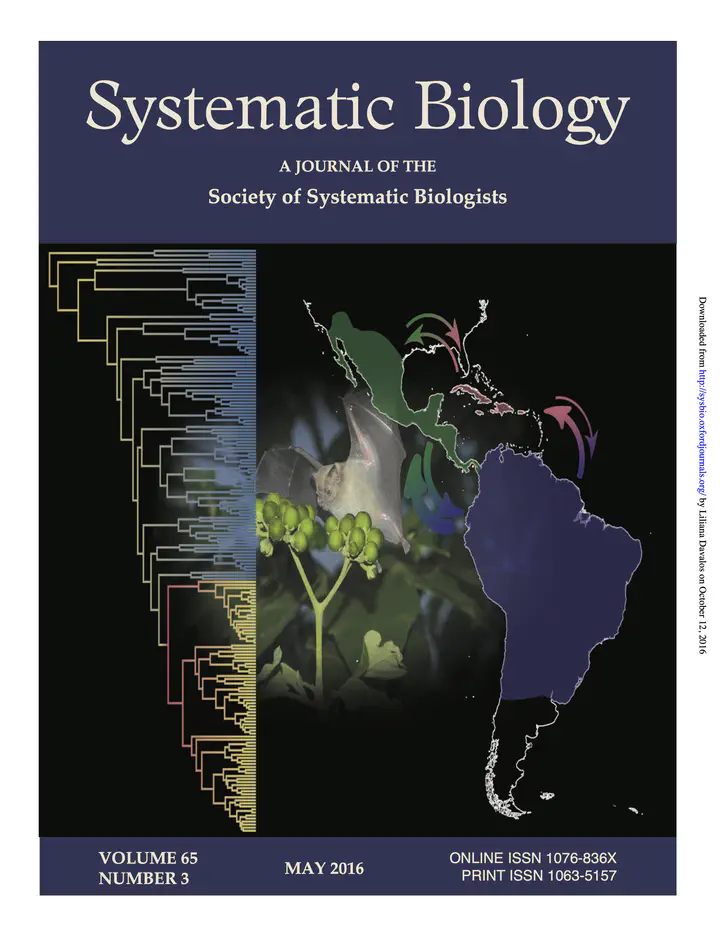Bats (Chiroptera: Noctilionoidea) Challenge a Recent Origin of Extant Neotropical Diversity
 Image credit: D. Rojas
Image credit: D. Rojas
Abstract
The mechanisms underlying the high extant biodiversity in the Neotropics have been controversial since the 19th century. Support for the influence of period-specific changes on diversification often rests on detecting more speciation events during a particular period. The timing of speciation events may reflect the influence of incomplete taxon sampling, protracted speciation, and null processes of lineage accumulation. Here we assess the influence of these factors on the timing of speciation with new multilocus data for New World noctilionoid bats (Chiroptera Noctilionoidea). Biogeographic analyses revealed the importance of the Neotropics in noctilionoid diversification, and the critical role of dispersal. We detected no shift in speciation rate associated with the Quaternary or pre-Quaternary periods, and instead found an increase in speciation linked to the evolution of the subfamily Stenodermatinae (∼18 Ma). Simulations modeling constant speciation and extinction rates for the phylogeny systematically showed more speciation events in the Quaternary. Since recording more divergence events in the Quaternary can result from lineage accumulation, the age of extant sister species cannot be interpreted as supporting higher speciation rates during this period. Instead, analyzing the factors that influence speciation requires modeling lineage-specific traits and environmental, spatial, and ecological drivers of speciation.